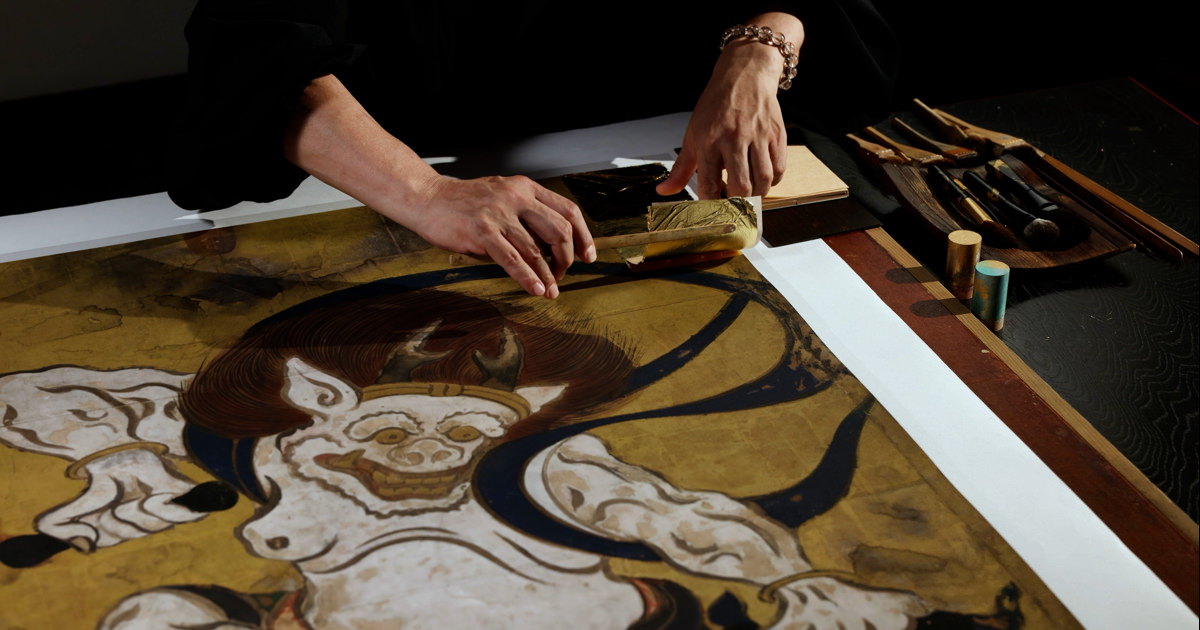Frolicking Birds in Plum and Willow Trees
High-resolution facsimiles
- Material
- printed, gold on washi paper
- Period of creation
-
Tsuzuri Project
Stage 7 2013–2014
Stage 9 2015–2016 - Recipient
- Tenkyuin temple, a subtemple of Myoshinji Temple
Original
- Cultural property designation
- Important Cultural Property
- Artist
- Kano Sanraku/Sansetsu
- Historical era
- Edo (17th century)
- Material
- ink, color and gold on washi paper
- Medium
- Eighteen sliding doors
- Size
-
North 4 panels : H184.2 × W93.9 cm
East 4 panels : H189.5 × W141.2 cm
South 4 panels : H178.8 × W87.4 cm
West 6 panels : H178.8 × W83.8 cm - Collection
- Tenkyuin temple, a subtemple of Myoshinji Temple
Description
The second upper room of Tenkyuin Subtemple holds eight sliding doors comprising a total of 18 painted panels depicting mountain birds and pheasants on a plum tree. Of these 18 panels, ten are wooden sliding doors depicting mainly a willow and white herons. The depictions span the spring and winter seasons. Of the paintings on the Sliding Panels in the abbot‘s Chambers of Tenkyuin Subtemple, the most notable are the well-known Plum Blossoms and Frolicking Birds (four of the panels on the north side). This very interesting composition, illustrating the trunk of the plum trees wending its way upward and downward, seems to presage the masterpiece of later years, Sansetsu's The Old Plum that was painted in sliding doors in Tenshoin Subtemple, which is now in the collection of the Metropolitan Museum of Art in United States.






